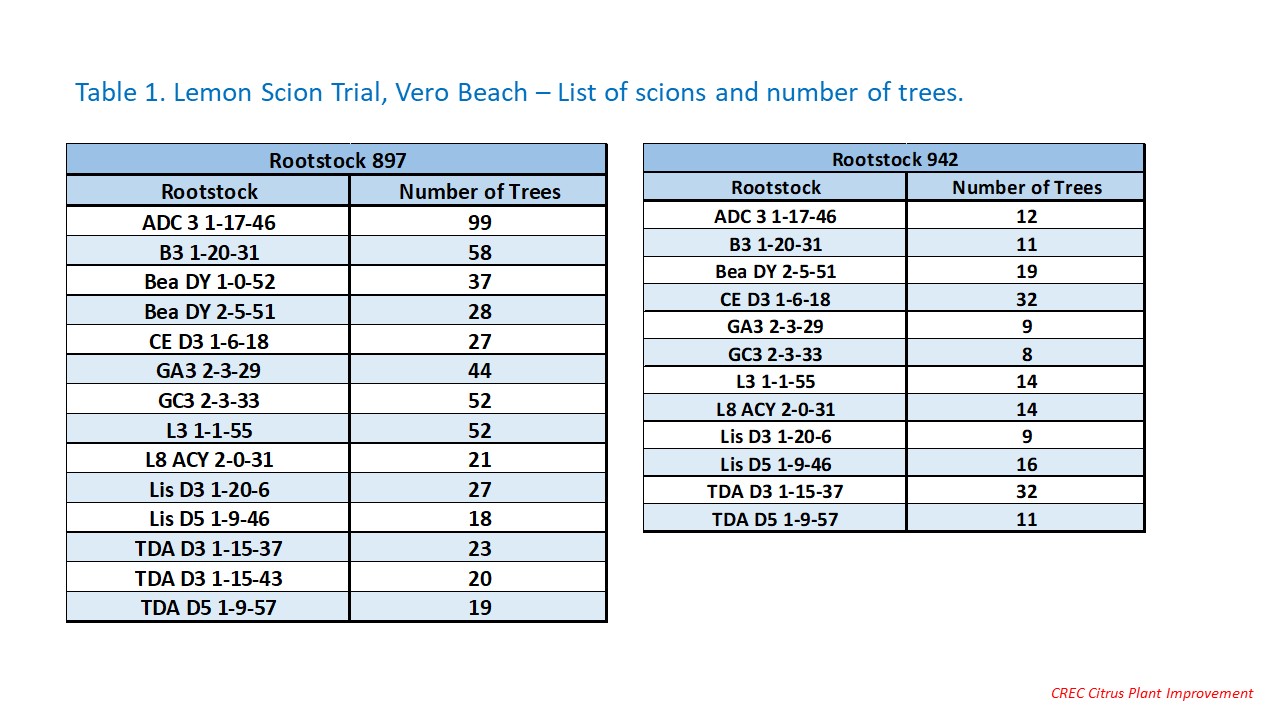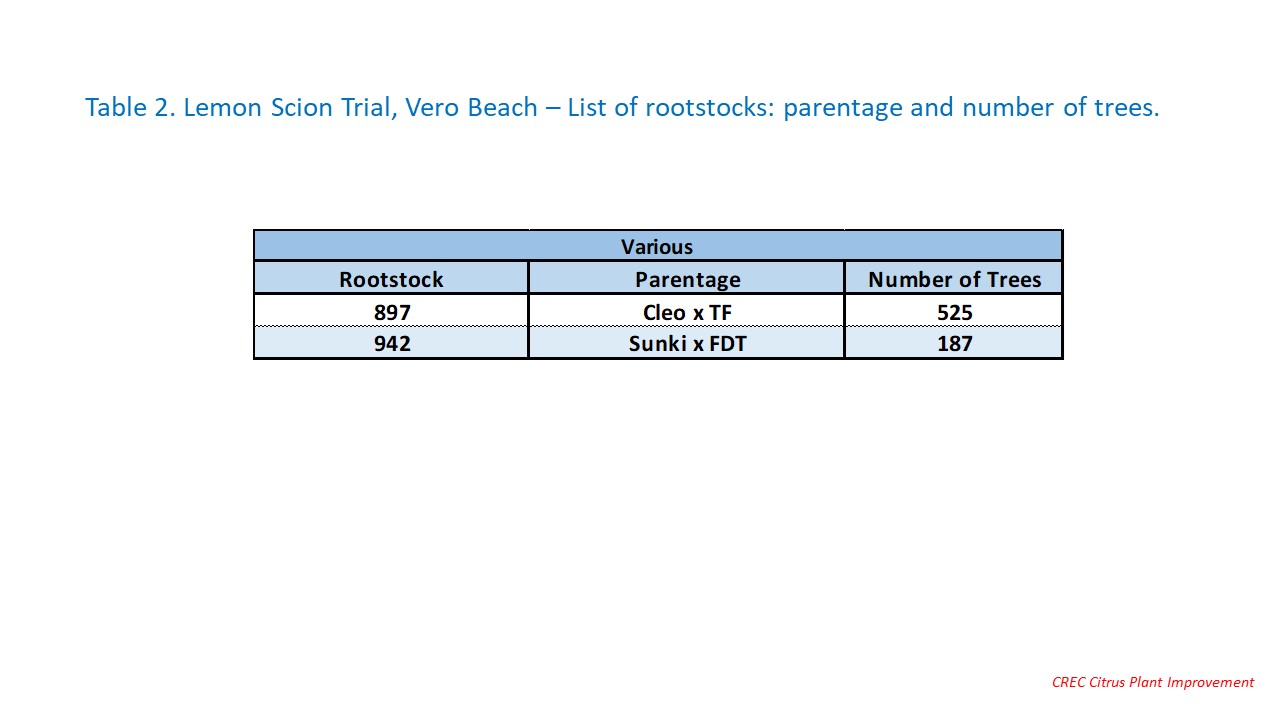Lemon Scion Trial with Two Rootstocks, Vero Beach
Dr. Fred Gmitter – Dr. Jude Grosser – Dr. Bill Castle
October 5, 2021 – revised
October 29, 2020 - revised
December 7, 2018 - posted
CREC Citrus Plant Improvement
Lemon Scion Trial with Two Rootstocks - Description
There has been a resurgence of lemon planting in Florida due to its higher HLB tolerance. Lemon oil is a valuable commercial commodity for both industrial and food-industry uses. As a result, a sponsored project was initiated by the CREC plant breeding team to create lemon selections with superior peel oil production using a diverse collection of existing lemon cultivars introduced from the United States and other parts of the world. This field trial, planted in Vero Beach in 2017, consists of the top twelve UF/CREC lemon clones previously selected for increased peel oil production, on US-942 and US-897 rootstocks. The goal of this trial is to identify the best high-oil lemon clone(s) adapted to Florida/Indian River growing conditions while also observing fresh fruit potential.
Lemon Scion Trial with Two Rootstocks, Vero Beach - Summary
- Site: Vero Beach, Indian River County
- Scions - Rootstocks:
- 14 scions on US 897 & 11 scions on US 942.
- Date Planted: June 2017
- Design: 1-2 replicates of each scion rootstock combination.
- Plot size: 15-25 trees
- Spacing: 13.5 x 22.5 ft. = 143 trees/acre
- Data:
- 2017/18: HLB ratings and tree survival [Dec 2017 & Feb 2018] after hurricane Irma’s heavy flooding in the area, with the trees submerged under water for up to 10 days.
- 2020/21: HLB rating and number of seeds/fruit [Sep 2020]; Yield [boxes/tree, Dec 2020], Tree Height [ft.].
- Trial status: ACTIVE
Lemon Scion Trial with Two Rootstocks, Vero Beach – Interpretive Summary as of Fall 2020:
- The trial trees were beginning to show some differences in HLB response by year 3, but the variability precluded any reasonable preliminary conclusions.
- Tree survival about 12-14 months after the Hurricane Irma flooding event ranged from 30 to 90% across the scions and both rootstocks. Trees of ADC3 1-17-46, L3 1-1-55 and CE D3 1-6-18 had the poorest survival in general.
- Lis D3 1-20-6, Lis D5 1-9-46, TDA D3 1-15-37, ADC3 1-17-46 (though it also exhibited poorer flood survival), and TDA D5 1-9-57 were among those with the fewest number of seeds.



.jpg)